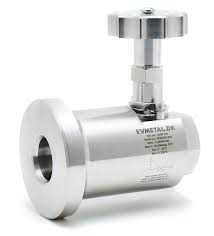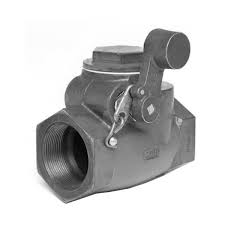FSV Series External Emergency Valve 1/2″ to 3″

The Application of External Emergency Valve
The Industrial External Emergency Valve is a critical safety component used across various industries, including chemical plants, refineries, and pipeline systems. These valves are designed to provide rapid and reliable emergency shutoff capabilities, ensuring the containment of hazardous materials in the event of an accident or emergency situation. The Chemical Plant Emergency Shutoff Valve is particularly essential in chemical processing facilities, where the quick isolation of pipe systems can prevent the escalation of dangerous incidents. Furthermore, the Automatic Safety Shutoff Valve leverages advanced technology to autonomously detect and respond to emergency conditions, enhancing the overall safety and reliability of the system. Renowned manufacturers like Cameron offer a wide range of high-quality external emergency valves, tailored to meet the specific needs and requirements of different industrial applications, ensuring the protection of both personnel and the environment.
What Are The Types Of External Emergency Valve?
- Ball Valves: External emergency ball valves are designed with a rotating ball mechanism that can quickly shut off flow in the event of an emergency. They offer fast, positive shutoff and are commonly used in pipeline and process applications.
- Gate Valves: External emergency gate valves use a sliding gate or wedge to control flow. They provide a tight shutoff and are well-suited for on/off service in pipelines, process plants, and other industrial facilities.
- Globe Valves: External emergency globe valves utilize a movable plug or disc that seats against a stationary ring to regulate flow. They offer good throttling control and are often used for modulating applications in addition to emergency shutoff.
- Butterfly Valves: External emergency butterfly valves feature a rotary disc that pivots to open and close the valve. They are lightweight, compact, and provide fast, reliable emergency isolation of pipelines and process equipment.
- Diaphragm Valves: External emergency diaphragm valves use a flexible diaphragm to open and close the valve. They are well-suited for handling slurries, corrosive fluids, and other challenging media, making them ideal for emergency applications in harsh environments.
What Is External Emergency Valve?
An External Emergency Valve is a critical safety device used in a wide range of industrial applications to provide rapid and reliable isolation of process systems in the event of an emergency. These specialized valves are designed to quickly shut off the flow of potentially hazardous materials, such as gases, liquids, or slurries, in order to contain incidents and mitigate the risk of escalation. Strategically placed throughout pipelines, process equipment, and storage facilities, External Emergency Valves can be remotely activated or automatically triggered by sensor-based emergency detection systems. Featuring robust construction, fast-acting mechanisms, and advanced actuation technologies, these valves play a vital role in safeguarding personnel, protecting the environment, and ensuring the overall integrity of critical industrial infrastructure.
How to Select the Right External Emergency Valve?
When selecting the appropriate External Emergency Valve for a specific application, several key factors must be considered to ensure optimal performance and safety. These include the valve type (such as ball, gate, or butterfly), the size and pressure rating required, the compatibility with the process media, the speed of actuation needed for emergency response, and the environmental conditions the valve will be operating in. Additionally, the integration with the overall control and safety systems is crucial, as External Emergency Valves must be able to seamlessly interface with automated emergency shutdown protocols. Consulting with experienced valve manufacturers, such as Cameron, can help industrial operators identify the most suitable External Emergency Valve solution that meets their unique operational requirements and safety standards.
Features of External Emergency Valve
Rapid Actuation:
External Emergency Valves are designed with specialized mechanisms that enable lightning-fast closure, allowing for immediate flow isolation in emergency situations.
Reliability and Redundancy:
These valves feature robust construction and are often equipped with redundant actuation systems to ensure fail-safe operation, even in the event of a primary system failure.
Process Media Compatibility:
External Emergency Valves are available in a variety of materials and seal configurations to ensure compatibility with a wide range of hazardous process fluids, gases, and slurries.
Automated Emergency Response:
Many External Emergency Valves can be integrated with sensor-based monitoring and control systems, enabling automatic activation in response to detected abnormal conditions.
Environmental Resilience:
External Emergency Valves are engineered to withstand the rigors of harsh industrial environments, including extreme temperatures, vibrations, and exposure to the elements.
Customization Capabilities:
Manufacturers like Cameron offer a wide range of customization options to tailor External Emergency Valves to the specific requirements of each application.
Advantages and Disadvantages of External Emergency Valve
Advantages of External Emergency Valve:
- Rapid Response: External Emergency Valves are designed to provide instantaneous shutoff, minimizing the potential for the escalation of emergency situations.
- Enhanced Safety: By quickly isolating process systems, these valves help safeguard personnel, equipment, and the surrounding environment from the risks associated with hazardous material releases.
- Reliability: External Emergency Valves are engineered with redundant features and robust construction to ensure dependable performance, even under the most demanding conditions.
- Customization: Manufacturers offer a wide range of customization options to match the specific requirements of each application, ensuring optimal performance and compatibility.
Disadvantages of External Emergency Valve:
- Initial Cost: External Emergency Valves can be more expensive than standard process valves due to their specialized design and advanced features.
- Maintenance Requirements: These valves may require more frequent inspection and servicing to ensure they remain in optimal working condition for emergency situations.
- Installation Complexity: Proper placement and integration of External Emergency Valves with the overall control and safety systems can be more challenging compared to standard valves.
- Limited Throttling Capability: While focused on rapid emergency shutoff, External Emergency Valves may not be as well-suited for precise flow control applications.

The Specifications of External Emergency Valve
| Specification | Details |
|---|---|
| Type | Ball Valve |
| Ball Material | Stainless Steel |
| Attachment Type | Flanged |
| Thread Standard | ASME B16.5 |
| Thread Size | 4 inch |
| Body Material | Carbon Steel |
| Safe for Use With | Oil, Gas, Water, Chemicals |
| Handle Type | Lever |
| Handle Material | Aluminum |
| Maximum Working Pressure (psi) | 500 |
| Maximum Working Pressure (bar) | 34.5 |
| Operating Pressure | 400 psi (27.6 bar) |
The Installation Steps for External Emergency Valve
Site Preparation:
Ensure the installation location is clear of obstructions and easily accessible for operation and maintenance. Verify the pipeline dimensions match the valve’s specifications.
Valve Positioning:
Determine the optimal orientation and placement of the valve based on the process flow, access requirements, and integration with the overall control system.
Flange Alignment:
Properly align the valve’s flanged connections with the corresponding pipeline flanges, ensuring a secure and leak-free fit.
Fastener Installation:
Install the appropriate flange bolts and tighten them in a star or crisscross pattern to the recommended torque values, as specified by the valve manufacturer.
Actuator Mounting:
If the valve is equipped with a separate actuator, mount the actuator securely to the valve body and connect the necessary electrical, pneumatic, or hydraulic supply lines.
Instrument Integration:
Integrate the valve’s position feedback and emergency shutdown signals with the plant’s control and monitoring systems, ensuring seamless automation.
Operational Testing:
Perform a full functional test of the valve, including verifying its ability to open, close, and maintain a tight seal under normal and emergency conditions.
Documentation and Maintenance:
Retain all installation records and follow the manufacturer’s recommended maintenance schedule to ensure the valve’s long-term reliability and performance.
The Operation Theory of External Emergency Valve
Operation Theory of External Emergency Valves:
External Emergency Valves are designed to quickly isolate process systems in the event of an emergency. They typically employ a fast-acting mechanism, such as a spring-loaded or hydraulically/pneumatically actuated ball or gate, that can rapidly close off the flow of hazardous materials. These valves are often integrated with sensor-based monitoring systems that can automatically trigger the emergency shutoff in response to abnormal conditions, such as pressure spikes, temperature changes, or leak detection.Outdoor Hazardous Materials Emergency Valves:Outdoor Hazardous Materials Emergency Valves are a specialized type of External Emergency Valve designed for use in outdoor environments, where they may be exposed to environmental factors like weather, temperature extremes, and potential physical impact. These valves are engineered to withstand harsh conditions while maintaining their reliability and rapid response capabilities, ensuring the safe containment of hazardous materials in the event of an incident.Pipeline Emergency Shut-off Devices:Pipeline Emergency Shut-off Devices are a critical component of pipeline safety systems, responsible for rapidly isolating sections of pipelines in the event of an emergency. These devices, which can include External Emergency Valves, are strategically placed along the pipeline network and can be remotely activated or automatically triggered by alarm systems. Their fast-acting closure mechanisms help mitigate the risks of product leaks, fires, or other hazardous events by quickly stopping the flow of materials through the pipeline.The common thread among these various types of External Emergency Valves is their ability to provide reliable, rapid, and automated isolation of process systems in order to safeguard personnel, equipment, and the environment during emergency situations.
